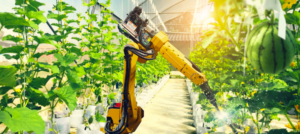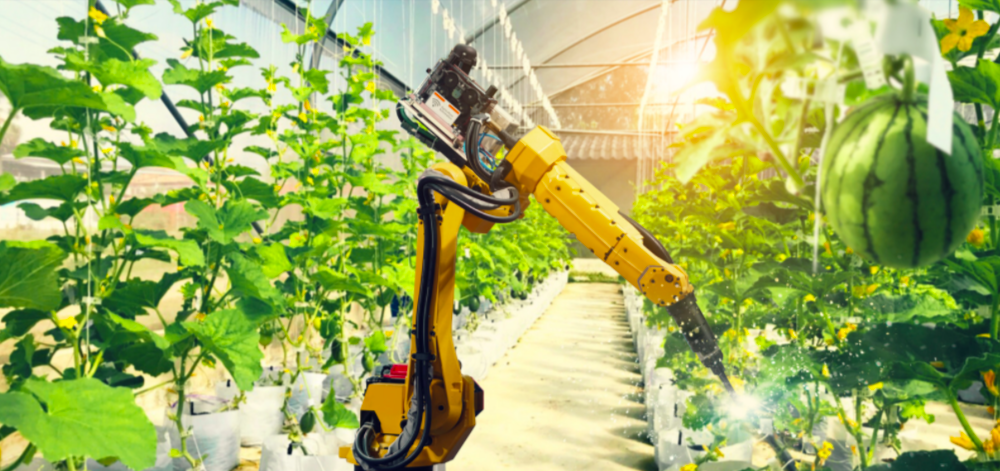The United Nations is projecting that by 2030 the global population will stand at 8.5 billion and farmers are being forced to confront a dire situation regarding increasing demand of the decreasing supply of land and crops. On top of increasing population, poor land management practices, industrial and intensive agriculture, climate change, insects, and plant diseases contribute to the loss of fertile land and thousands of crops a year. In the face of all these worrying factors, some are proposing farmers utilize Artificial Intelligence (AI) as part of the solution.
AI is promoted as a way to help farmers cut down on the amount of manual laborers needed to run a successful farm. This may worry some individuals when they hear about shrinking the labor force but agriculture is experiencing a massive shortage in workers. Not only that but agriculture workers are 20 times more likely than workers in other industries to die from heat and as global temperatures increase so do those risks. Utilizing AI in some of these areas could help with the worker shortage and save the lives of those already working in agriculture. However, we cannot overlook that farmers are underpaid, undervalued and severely underprotected from occupational hazards and illnesses like COVID-19.
 On top of potentially saving lives, AI can gather and process massive chunks of information, as well as come up with a possible course of action, then facilitate that action when paired with other technology. For example, AI can provide farmers with live updates of their fields which would let the farmer know which areas need pesticide treatment, irrigation, or fertilization. It should be noted that if farmers focus on small-scale production of crops that grow well together, they can avoid pesticides, chemical fertilizers, and even minimize the need for major irrigation.
On top of potentially saving lives, AI can gather and process massive chunks of information, as well as come up with a possible course of action, then facilitate that action when paired with other technology. For example, AI can provide farmers with live updates of their fields which would let the farmer know which areas need pesticide treatment, irrigation, or fertilization. It should be noted that if farmers focus on small-scale production of crops that grow well together, they can avoid pesticides, chemical fertilizers, and even minimize the need for major irrigation.
Although all of these things sound great, it is important to note the problems that arise from AI. On its own, it cannot provide farmers with all the solutions they need. Farmers would also need to invest in technological framework that ensures the AI is able to perform optimally. Additionally, the technical knowledge and capital required to utilize AI in farming will create a barrier for smaller independent farmers unless grants, policies, and other mechanisms are put in place to make these technologies more accessible. Without these mechanisms, agribusiness corporations are poised to make large gains at the expense of smaller farms. AI may be used to manage some of the problems driven by climate change and increasing population growth, but it is not a solution.
Furthermore, since AI in farming is an unexplored frontier there are no clear policies and regulations that have been implemented to protect users’ privacy and security. This means that farmers are at risk for cyberattacks and data leaks which could pose serious problems.
At the end of the day it is up to the farmer to choose what works best for themselves and their farm. The benefits of AI in farming are undeniable but so are the risks. Regardless of if a farmer chooses to utilize AI or not, it is important to note that the environment is changing and farmers have already begun to see the implications of the climate emergency.
Here at Missouri Coalition for the Environment, we do not claim to be experts on AI. We understand that although there could be some benefits from AI, those benefits would primarily go to large agribusiness corporations. Farmers are experiencing dire circumstances because policies prop up agribusiness corporations while leaving small farmers to fend for themselves. These agribusiness corporations dominate our food systems, externalize pollution that exacerbates climate change, and degrade the land. When seeking policy solutions to climate change, policymakers should ensure their solutions support localized food economies. Additionally, independent farmers who use regenerative practices to manage their land need to be supported to prevent large agribusiness conglomerates from taking over and to help conserve fertile lands.
 With help from Rural Justice Organizer, Sophie Watterson, this article has been written by one of our summer 2021 interns, Chiamaka Chukwu, who has a keen interest in AI and is also working with The National Fair Housing Alliance as a Tech Policy Intern.
With help from Rural Justice Organizer, Sophie Watterson, this article has been written by one of our summer 2021 interns, Chiamaka Chukwu, who has a keen interest in AI and is also working with The National Fair Housing Alliance as a Tech Policy Intern.

